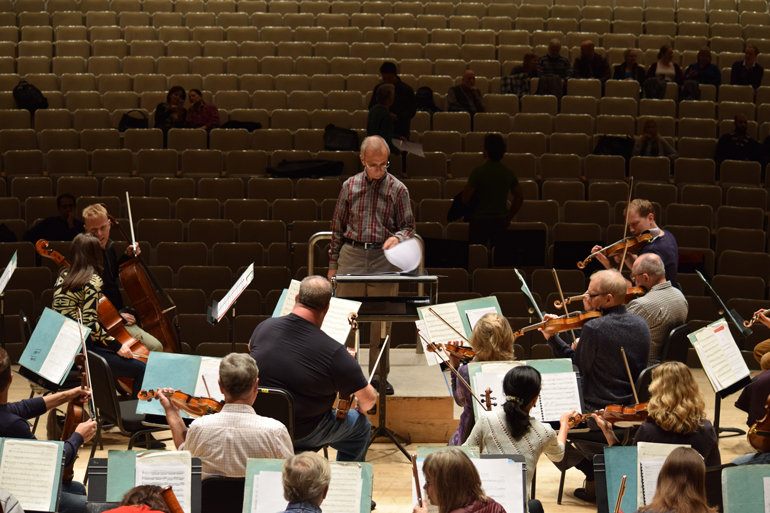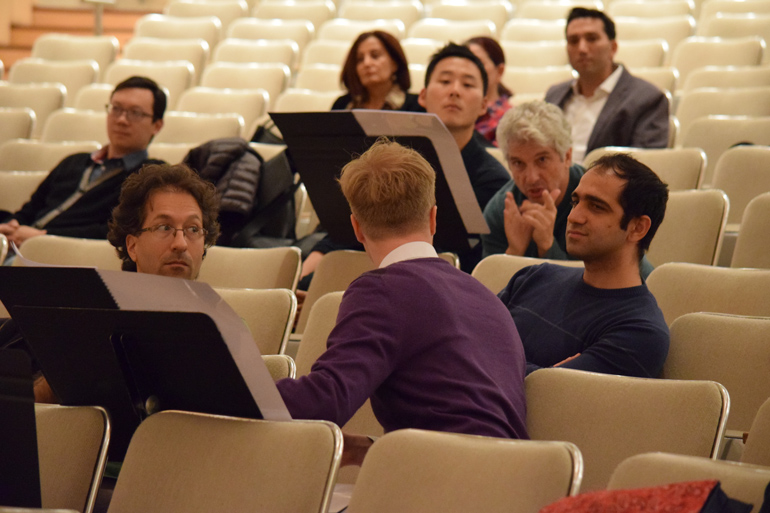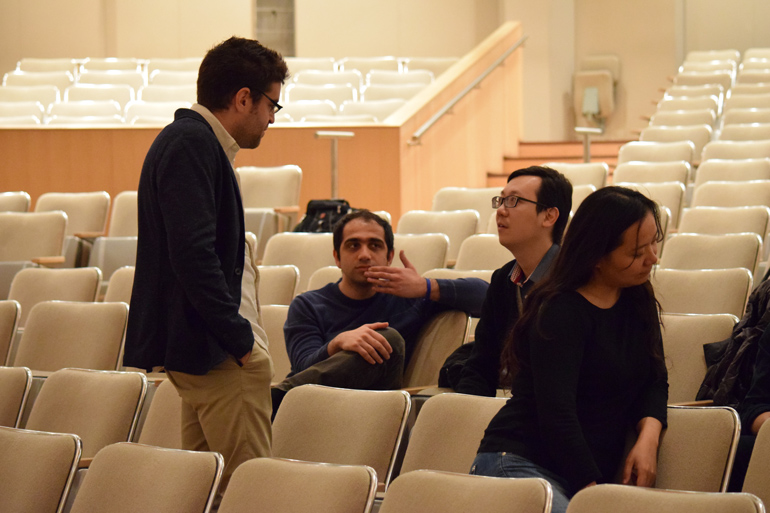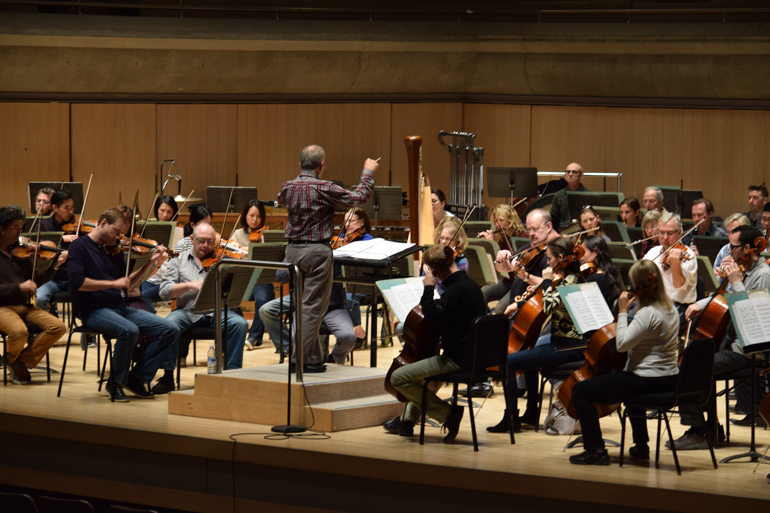
This past Saturday the Toronto Symphony Orchestra under the baton of Composer Advisor Gary Kulesha took a stab at four works by emerging Canadian composers during their annual “reading”, a rehearsal set aside for grappling with new music by emerging composers.
While symphony orchestras are generally associated with performing music from the past, The Toronto Symphony Orchestra, and its associates dedicate significant portions of time to performing and mentoring new music. For the past few years, the TSO has held a Call for Scores, which offers Canadian composers a unique experience of having a work performed in rehearsal by the symphony orchestra. Overall, the situation is a win-win as the TSO has a chance to become directly involved with new and emerging composing talent while the selected composers receive an enriching experience from hearing their piece performed by the symphony orchestra in Roy Thompson Hall at a closed rehearsal.
Writing orchestra music can be a daunting task for composers: the time and energy to compose for such a large group of instruments – often over 20 different parts – is huge, and young and emerging composers have difficulty breaking into a world where orchestra concert seasons are sometimes planned years in advance. Also, it takes much learning, listening and composing to commandeer orchestral forces. Parameters like ensemble balance, instrumental ranges, tempo changes and notation are constantly dealt with, during the writing process as well as in rehearsal.

“There are always lessons to be learned when writing for orchestra,” recently appointed RBC Affiliate Composer Jordan Pal says. “It’s a learned art, and an art that’s always changing, so as a composer you’re forever expanding your skills. I have a recurring nightmare that my clarinet parts aren’t properly transposed. It’s the simplest thing, but a lesson that you really don’t want to learn!”
Pieces were selected for the reading after a general call for scores to any composer with Canadian citizenship. Dozens of composers submitted, but only four would have to be selected for the reading.
“Firstly, we were looking for composers who have an obvious ability to write for orchestra,” Jordan Pal says. “But more specifically, we were looking for composers who are writing for the orchestra at a level that makes sense for an experience like this.”
“It’s not about finding the next Rimsky-Korsakov of the 21st century, but you want composers who have enough orchestral composition experience that the orchestra will respond in a positive and mentoring sort of way. I think this is what happened this year.”

Out of dozens of applicants, the jury eventually settled on pieces composed by composers Riho Maimets, Kamyar Mohajer, Chris Meyer and Alfredo Santa Ana. The four pieces, uniquely different, presented different challenges for the orchestra while displaying a high quality of artisanship with which the orchestra could respond to.
Seeing Gary Kulesha and the TSO rehearse is like witnessing the machinations of a finely oiled machine: Kulesha’s conducting is always clear, and the musician’s executions are so precise that little adjustment or correction is necessary after an initial read-through. After rehearsing Riho Maimets’ piece Entropy for the first time, Kulesha made a slight adjustment, (“Trumpets, change your forte dynamic to fortissimo at measure 137.”), and the orchestra was off again, intuitively responding to the slowly unfolding crescendi that were key to Maimets’ piece. Each half hour reading was enough to communicate each composers’ intentions with their music: the light, Latin-inspired pizzicato textures of Santa Ana’s piece Ocaso, the Persian dance rhythms of Mohajer’s Bliss, and the cinematic spaciousness of Meyer’s Reflection and Resolution.
The annual TSO reading is always fascinating to witness, a twofold joy of hearing a new piece being brought to life and seeing the efficient artistry of a world-class musical ensemble.
But there is more than just precision and efficiency involved with an orchestral rehearsal: there is that mysterious, less tangible element that elevates a good performance to a musical one when musicians are deeply moved by what they are playing.

“The best experiences are when the orchestra responds well to the music,” Pal comments. “It’s satisfying when players are moved by the music. Not only does it validate your writing, but if the music leaps off the page for the players, it will hopefully leap off the stage for an audience. When an orchestra responds to a piece, when it becomes their own, so to speak, it can be quite exhilarating.”
Although Maimets, Mohajer, Meyer and Santa Ana may have to wait a few years to expect a TSO commission, the orchestra is already programmed to perform Jordan Pal’s first premiere in June, as well as gearing up for the annual New Creations Festival, a concert series of new music running March 5th to 12th at Roy Thompson Hall. Jordan Pal hopes to bring his own creative experiences to the TSO in his role as affiliate composer:
“I love the idea of creating immersive concert experiences. Before studying composition, I played jazz and rock guitar. So, I’m very attracted to the idea of a multi-sensory concert experience.”
#LUDWIGVAN
Want more updates on Toronto-centric classical music news and review before anyone else finds out? Get our exclusive newsletter here and follow us on Facebook or Twitter for all the latest.
- PREVIEW | U of T Faculty of Music Brings Salvatore Sciarrino to Toronto - January 27, 2017
- PREVIEW | The Music Gallery Gears Up For The Viking Of 6th Avenue - November 25, 2016
- SCRUTINY | Esprit Orchestra Salutes The Legacy Of R. Murray Schafer - October 28, 2016



